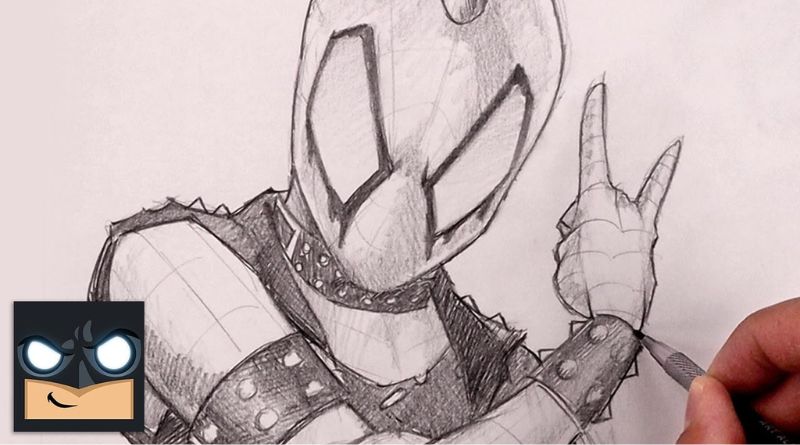Drawing is an art form that has been cherished across cultures for centuries, providing a way for people to express creativity, document their surroundings, or communicate visually. For beginners, especially, getting started with drawing can feel intimidating, but the key to enjoying this creative process is understanding that simple and easy drawings are a great way to begin. Whether you’re a young artist, a hobbyist, or someone looking to improve your skills, “faciles dibujos” (easy drawings) offer a fantastic way to practice and develop your technique.
In this article, we will explore some basic drawing techniques, tips, and easy ideas for beginners, so that anyone can start drawing with confidence and enjoyment.
Table of Contents
What Are “Faciles Dibujos”?
“Faciles dibujos” is a Spanish term that translates to “easy drawings.” These are simple, beginner-friendly drawings that don’t require advanced techniques or intricate details. These drawings are perfect for anyone looking to practice their sketching skills without feeling overwhelmed. They can range from basic shapes and objects to simple animals, landscapes, and cartoons. The goal is to encourage creativity and provide a foundation for more complex artworks in the future.
Why Should You Start with Easy Drawings?
If you’re just starting out with drawing, it might be tempting to jump right into intricate, highly detailed artwork. However, focusing on simple drawings at the beginning has several advantages:
- Boosts Confidence: Starting with easy drawings helps build your confidence as you see improvement quickly. It’s rewarding to complete a simple drawing and feel proud of your work.
- Develops Basic Skills: Easy drawings allow you to focus on the fundamentals, such as shapes, lines, proportions, and shading. These are the building blocks of more advanced artwork.
- Encourages Consistent Practice: When you start with something simple, you’re more likely to practice regularly. The more you practice, the better you’ll get.
- Improves Observation Skills: Simple drawings help sharpen your ability to observe the world around you and translate it into lines and shapes.
- Fun and Relaxing: Sometimes, drawing should be fun and stress-free. Easy drawings provide a way to relax and enjoy the process without worrying too much about perfection.
Drawing Techniques for Beginners
Before you dive into your easy drawings, it’s helpful to familiarize yourself with some basic drawing techniques. Here are a few to get you started:
1. Start with Basic Shapes
Everything you draw can be broken down into simple shapes like circles, squares, triangles, and rectangles. For example, if you’re drawing an animal, like a cat, start with a circle for the head, ovals for the body and paws, and a triangle for the tail. This technique is called shapes-based drawing and it helps establish the proportions and layout of your subject before adding more detail.
2. Use Light Lines for Sketching
When you’re sketching an easy drawing, always start with light lines. Use a pencil to draw loose, light shapes that can be easily erased and refined. This technique allows you to correct mistakes as you go, and it helps you focus on the overall composition rather than fine details in the beginning.
3. Practice Simple Strokes
Mastering a variety of pencil strokes, such as straight lines, curved lines, and shading, is an essential skill. Practice drawing basic lines with different pressures to create variation in thickness and texture. Curved lines will be useful for drawing organic shapes like animals, plants, and faces.
4. Use Reference Images
Even for easy drawings, it’s helpful to use reference images to guide your artwork. Looking at pictures of simple objects, animals, or landscapes will help you understand how to draw them accurately. Start by observing the basic shapes and proportions in the reference and try to replicate them.
5. Practice Shading
Shading adds depth and dimension to your drawings. Start by practicing basic shading techniques like cross-hatching (drawing lines in intersecting directions) or using smooth shading (lightly darkening areas of your drawing). Begin with soft shading to create realistic shadows or texture in your simple drawings.
Easy Drawing Ideas for Beginners
Now that you’ve learned some basic techniques, it’s time to explore some easy drawing ideas. Here are a few simple and fun things you can start drawing today:
1. Simple Shapes and Patterns
One of the best ways to get started is by drawing simple shapes and patterns. Practice drawing circles, squares, triangles, and rectangles, then experiment by combining these shapes to create more complex designs like stars, spirals, or geometric patterns.
- Example: Draw a spiral pattern made from concentric circles. Gradually make the lines wider or smaller to create a visually interesting effect.
2. Cute Animals
Drawing animals doesn’t have to be difficult. Start with simple, cartoon-style animals that are easy to outline and don’t require too much detail.
- Example: Draw a simple cat by starting with an oval for the body, a circle for the head, and triangles for the ears. Add eyes, a nose, and a tail to complete the look.
- Example: Draw a smiling fish with a basic teardrop shape for the body and simple lines for the fins.
3. Nature and Plants
The natural world offers endless inspiration for easy drawings. Start with trees, flowers, or leaves, which often have clear, simple shapes that are easy to replicate.
- Example: Draw a simple flower by starting with a small circle for the center and adding rounded petal shapes around it.
- Example: Draw a tree using a simple vertical line for the trunk and several circles or ovals for the canopy.
4. Food Illustrations
Food items are fun and easy subjects to draw, especially because many of them have simple and recognizable shapes. You can practice drawing food items that you enjoy, which also adds a personal touch to your creations.
- Example: Draw a slice of pizza by starting with a triangle shape for the slice and adding round toppings like pepperoni or olives.
- Example: Draw a cupcake by sketching an oval base and adding a fluffy, swirled top for the icing.
5. Cartoon Characters
Cartoon characters often have exaggerated shapes and minimal details, making them ideal for beginner artists. Start by drawing simple versions of your favorite characters or create your own.
- Example: Draw a basic version of a character by starting with a circle for the head, an oval for the body, and simple lines for arms and legs.
- Example: Draw a smiling face with large eyes, a small nose, and a big, friendly mouth.
6. Abstract Art
Abstract drawings allow you to play with shapes, lines, and colors without worrying about realism. Experiment with different shapes, swirls, and patterns to create your own abstract designs.
- Example: Draw several overlapping circles of different sizes and add lines that connect them in interesting ways to create an abstract composition.
7. Landscapes and Simple Scenes
Drawing simple landscapes can also be enjoyable. Focus on basic elements like the sky, sun, clouds, and trees.
- Example: Draw a simple mountain scene with a triangle for the mountains and a circle for the sun in the sky.
- Example: Draw a beach scene with a wavy line for the water and a half-circle for the sun setting over the horizon.
How to Improve Your Drawing Skills
The key to improving your drawing skills is consistent practice. Here are some tips for continuous growth:
- Draw Every Day: Even if it’s just for 10 minutes, daily practice helps build muscle memory and improves your skills.
- Challenge Yourself: As you gain confidence with easy drawings, try more complex subjects. Gradually introduce new challenges to push your abilities.
- Seek Feedback: Share your drawings with friends, family, or online communities to get feedback and tips for improvement.
- Use Different Mediums: Experiment with different pencils, colored pencils, markers, or even digital tools to add variety to your drawing experience.
Conclusion
“Faciles dibujos” (easy drawings) are a fantastic starting point for anyone who wants to learn how to draw. By starting with simple shapes, cartoon animals, and basic patterns, you can build a strong foundation for more advanced artwork down the road. Remember, the goal of drawing is not only to create something visually appealing but also to enjoy the process of learning and expressing yourself. So grab your pencil and start sketching today—your creativity is just waiting to be unleashed!



